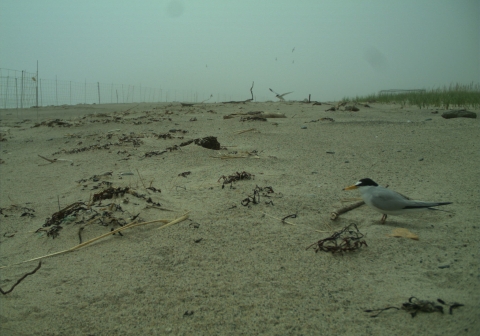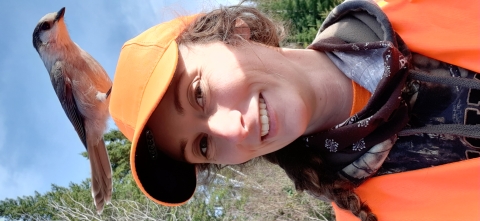"In every outthrust headland, in every curving beach, in every grain of sand there is the story of the earth."
Rachel Carson
To me, the most exciting feeling is walking out into a tern colony after weeks of monitoring it to see the first fledgling spread its wings, jump up, and fly! This is an incredibly joyous occasion and I can’t help but raise my arms to the sky and say to them, “Look at you! You did it!” Those terns have been through so much, and to see that they survived through it all gives me great hope and feeds the fire in my sense of wonder.
Having a sense of wonder is what got me into this field. In wildlife biology, you never stop learning, and that’s the point! Just when you think you have things all figured out, nature throws you for a loop and makes you ask even more questions.
But the thing is, nature knows exactly what it’s doing, it always has. We biologists are only a part of the story. We use research and science to figure things out to the best of our ability. We have datasheets and models and graphs, but the story goes so much further beyond that.
Sometimes you have to take a step back and just watch and listen. The animals and the habitat will teach you what you need to know, for they have been experiencing it for centuries. Biologists have the unique opportunity to bear witness to these stories and use them to help in this ever-changing world.
The least terns are a perfect example of this. Each individual bird has its own story of how it has survived through nesting, growing-up, and migration. Along with each bird comes the story of the beach it hatched on: the sand its nest cup was scraped into, the blades of dune grass it hid under as a tiny, fluffy chick, the neighboring tidal marshes and open ocean where the adults foraged fish and brought them back to feed it, the wind that carried it along its first migration, and so on. They all hold stories of storms and tides, erosion and deposition, drought and flood. All of these stories act as pieces of a puzzle (or multiple puzzles) that help us find out what is needed to ensure the survival and longevity of the species.
Having a sense of wonder is what helps keep me in tune with my work. It’s easy to get lost in numbers, but I am always grounded by the amazing things I get to witness every day.
Everything in nature has a story.
Now the question is, are you willing to channel your sense of wonder to listen to what it has to say?
Helen Manning has acted as a seasonal contracted technician and volunteer for Rachel Carson National Wildlife Refuge over the past three years. Her main focuses have been doing research and management for shorebirds, seabirds, and tidal-marsh birds. Helen grew up in Vermont where from a young age, her parents made sure she was exposed to the wonders of nature. She maintains an active outdoor lifestyle, and some of her favorite activities include (you guessed it) birding, hiking, and wildlife photography among other things.
Check out this factsheet to learn more about least terns, including some small things you can do to help them survive and thrive: https://www.maine.gov/ifw/docs/endangered/LeastTern_50_51_2011.pdf






